Entry Category: Law
Coronado Coal Co. v. United Mine Workers of America
aka: United Mine Workers of America v. Coronado Coal Co.
Corrothers, Helen Gladys Curl
 George Corvett Lynching Article
George Corvett Lynching Article
Corvett, George (Lynching of)
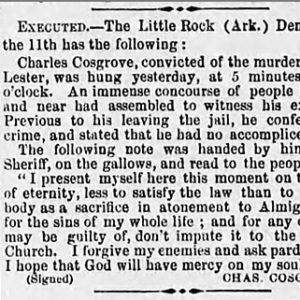 Cosgrove Execution Story
Cosgrove Execution Story
 Charles Cosgrove
Charles Cosgrove
Cosgrove, Charles (Execution of)
 Judge Calvin Cotham
Judge Calvin Cotham
Cotton, John (Lynching of)
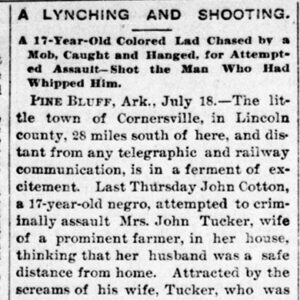 John Cotton Lynching Article
John Cotton Lynching Article
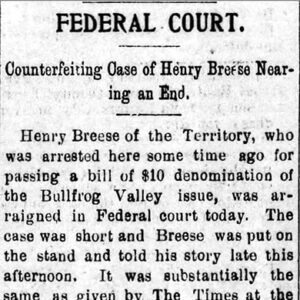 Counterfeiting Article
Counterfeiting Article
County Coroner, Office of the
County Judge, Office of
Covenant, the Sword and the Arm of the Lord
Covington, Riley (Reported Lynching of)
Coy, Edward (Lynching of)
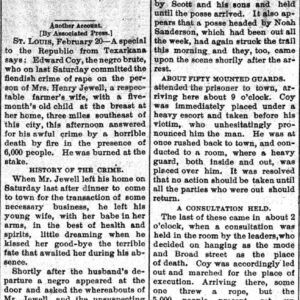 Coy Lynching Article (AP)
Coy Lynching Article (AP)
 Coy Lynching Article
Coy Lynching Article
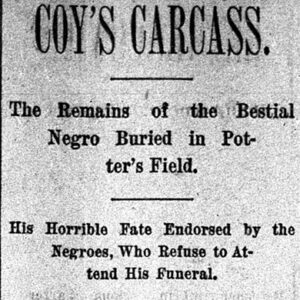 Coy Lynching Article
Coy Lynching Article
 Crawford County Execution Article
Crawford County Execution Article
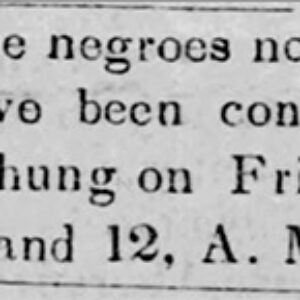 Crawford County Execution Article
Crawford County Execution Article
Crawford County Executions of 1843
Crawford, Maud Robinson
 Creed Caldwell Story
Creed Caldwell Story
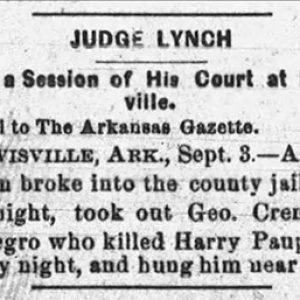 George Crenshaw Lynching Article
George Crenshaw Lynching Article
Crenshaw, George (Lynching of)
Criminal Justice Institute
Crittenden County Executions of 1871
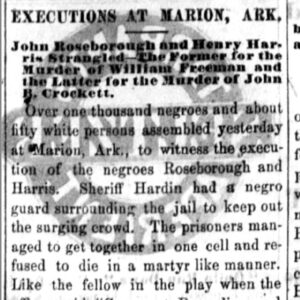 Crittenden County Executions Story
Crittenden County Executions Story
 Crittenden County Lynching Article
Crittenden County Lynching Article
Cross, Edward
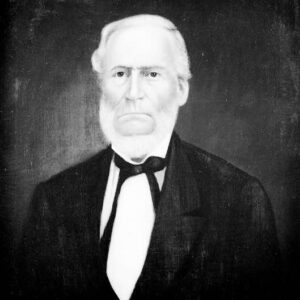 Edward Cross
Edward Cross
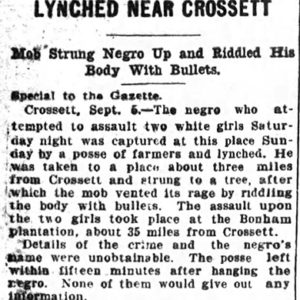 Crossett Lynching Article
Crossett Lynching Article
Crossett Lynching of 1904
Crownover (Lynching of)
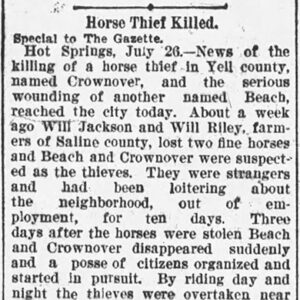 Crownover Lynching Article
Crownover Lynching Article
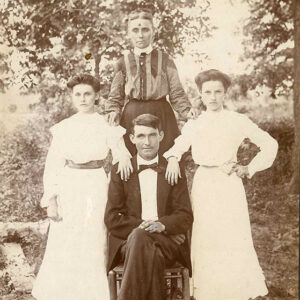 Andy Crum
Andy Crum
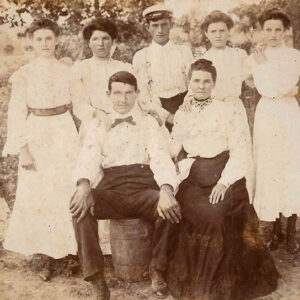 Andy Crum
Andy Crum
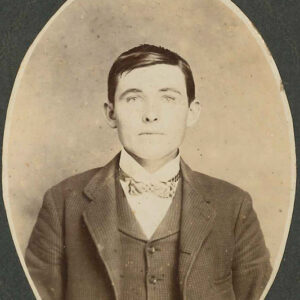 Andy Crum
Andy Crum
 Andy Crum Bank Note
Andy Crum Bank Note
 Patsy Crum at 1979-80 Constitutional Convention
Patsy Crum at 1979-80 Constitutional Convention
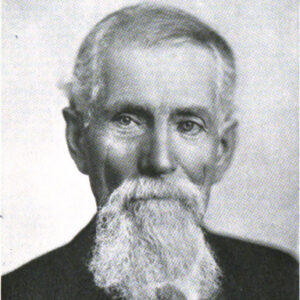 George J. Crump
George J. Crump
Crumpton, Boudinot (Execution of)
aka: Bood Burris (Execution of)
 Crumpton, Boudinot Execution Story
Crumpton, Boudinot Execution Story
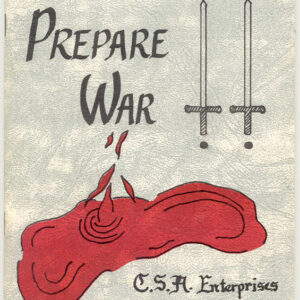 CSA Booklet
CSA Booklet




